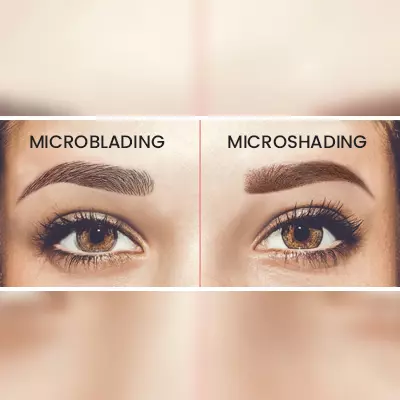Beauty trends keep changing, and new fashions keep emerging. As a result of consumer demand, new cosmetic treatments are continually being designed and introduced. These advanced beauty treatments help us reinvent ourselves by getting us closer to how we want to look.
Like other parts of our body, eyebrows play a vital role in enhancing our overall appearance. For this reason, eyebrow trends have been changing for decades. There was a time when slim, sleek, and barely-there eyebrows were trending. However, thicker, bushier, and more well-defined eyebrows are all the rage nowadays.
Since everyone does not have the desired eyebrow shape and thickness, they resort to cosmetic solutions. Fortunately, we have several cosmetic treatments, such as Microblading and Microshading, to help candidates achieve their desired brow line. While these are two different treatments, some people stay confused about their difference.
What is Microblading?
It is a semi-permanent makeup technique that helps fill in sparse eyebrows. Generally, the procedure is effective and simple, although some discomfort may be experienced. Although this procedure involves the use of needles, the pain experienced is generally minimal. This pain is usually well-tolerable for almost everyone, but you can choose to have a numbing solution applied if you want the procedure to be completely pain-free.
An expert will use a specialized tool with microblade or needles on it during the treatment. They will use a pigment matching the candidate’s natural eyebrow hair. With the help of this tool, they will draw hair-like strokes, allowing the cosmetic dye to penetrate the skin.
Microblading can take a couple of hours to complete because each stroke must be precise. After the treatment, candidates get thicker and fuller eyebrows that look like natural eyebrow hair.
What is Microshading?
Microshading is also a semi-permanent makeup technique for the eyebrows. It is also a simple and pain-free treatment that becomes further comfortable with numbing creams. However, it is not entirely the same as Microblading.
An expert will use a stippling method during this treatment, which is different from creating hair-like strokes with pigment in the eyebrows, as in microblading. It means that they will deliver repetitive pigment doses to the eyebrow instead of doing it in one go, like Microblading.
As a result of the treatment, candidates can enjoy less harsh-looking results. This treatment helps create the appearance of natural-looking eyebrows, quite like microblading.
Styles of Microshading
There are two styles of microshading, depending on the candidate’s choice of how bold or soft they want their eyebrows to look. These two methods can help create several other brow styles.
These two styles of Microshading are as follows:
Soft and Powder Brows
This style of Microshading is ideal for candidates who want their eyebrows to appear softer and gentler. This method is perfect if you want a lighter shade on your brows.
The Instagram Brow
Instagram Brows are the ultimate hit nowadays among ladies. This look is favored by celebrities and models all across the globe. It allows you to create a gradient effect on the eyebrows, giving them a unique appearance.
Difference between Microblading and Microshading
The most significant difference between the two techniques is their tool for the procedure. Microshading uses a rotary tool, which allows the expert to create a stippled or dotted effect. Using this tool, they can achieve the eyebrows’ desired powdered and softer look.
On the other hand, microblading draws tiny and natural-looking hair strokes, creating the appearance of hair strands.
The Bottom Line
Both treatments have pros and cons, so it mainly boils down to your preferences and practitioner’s recommendations. These treatments yield natural-looking results that can last for about 1-2 years, although this can vary depending on factors such as skin type, lifestyle, and post-care. After this timeframe, candidates will have to get a follow-up.
While both treatments offer exceptional results, microblading is particularly in demand due to the hair strand appearance it creates. If you want to get this treatment, consult a qualified practitioner.


